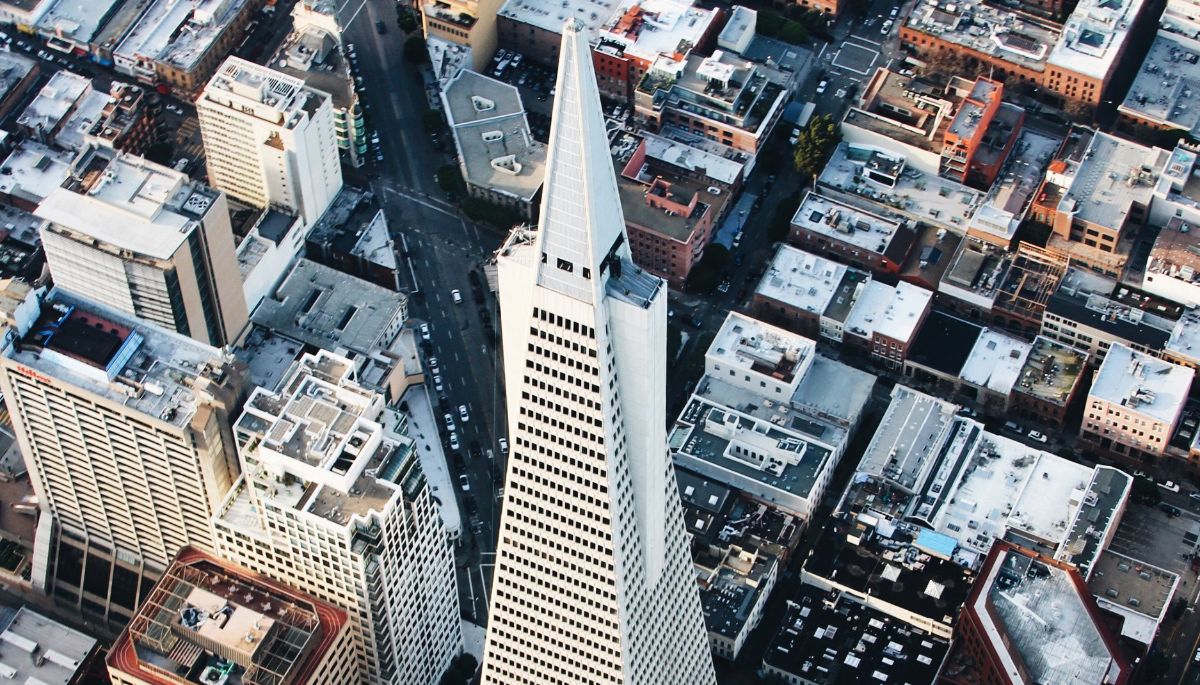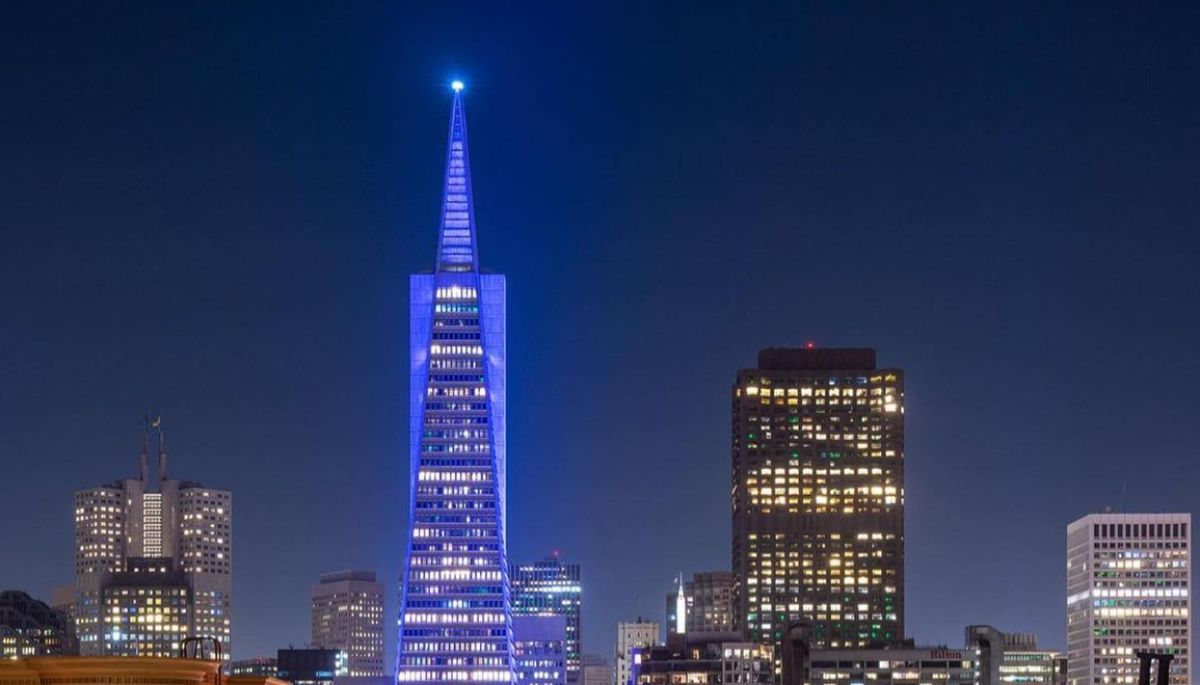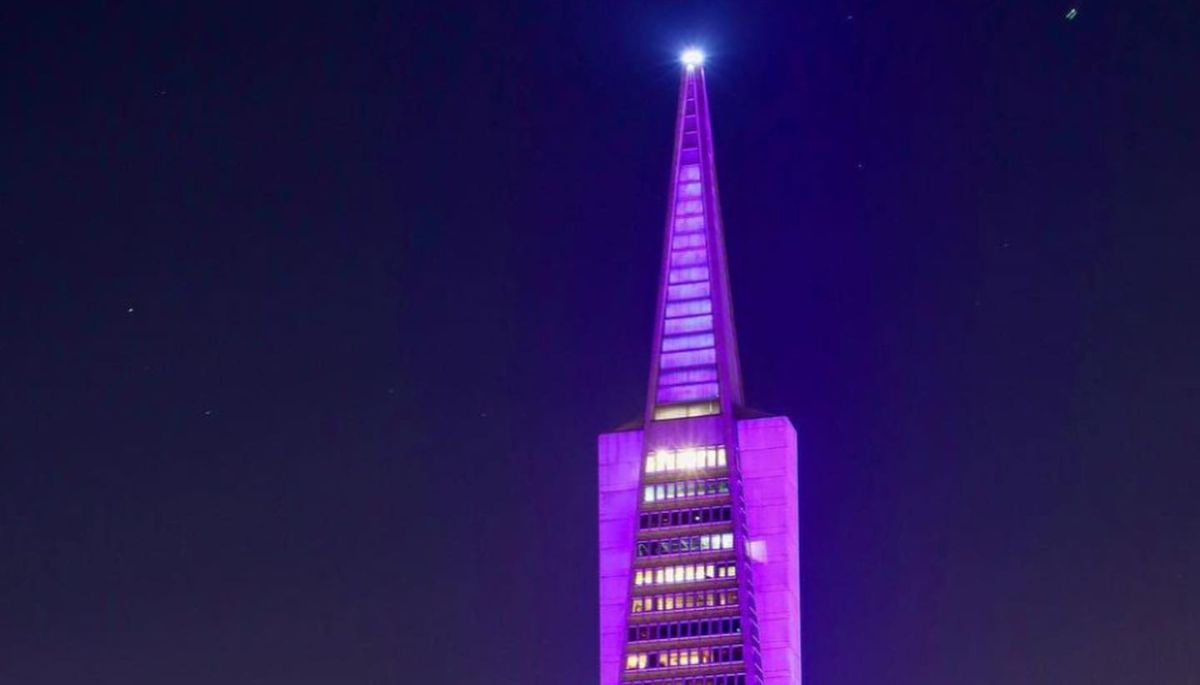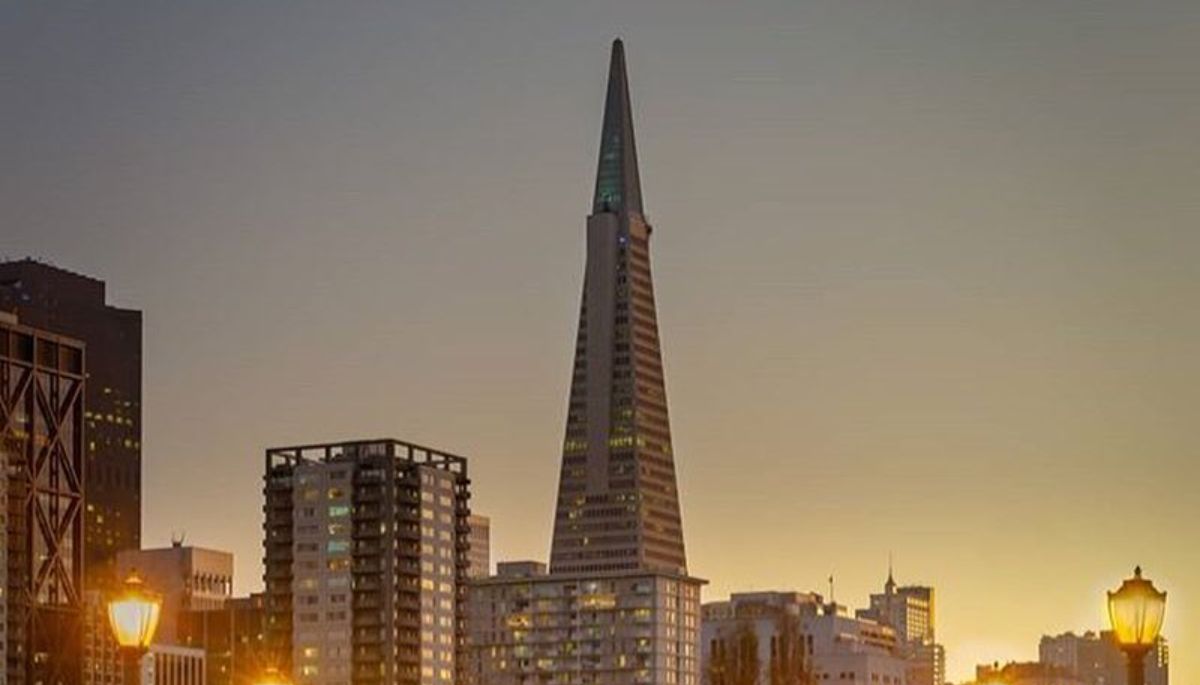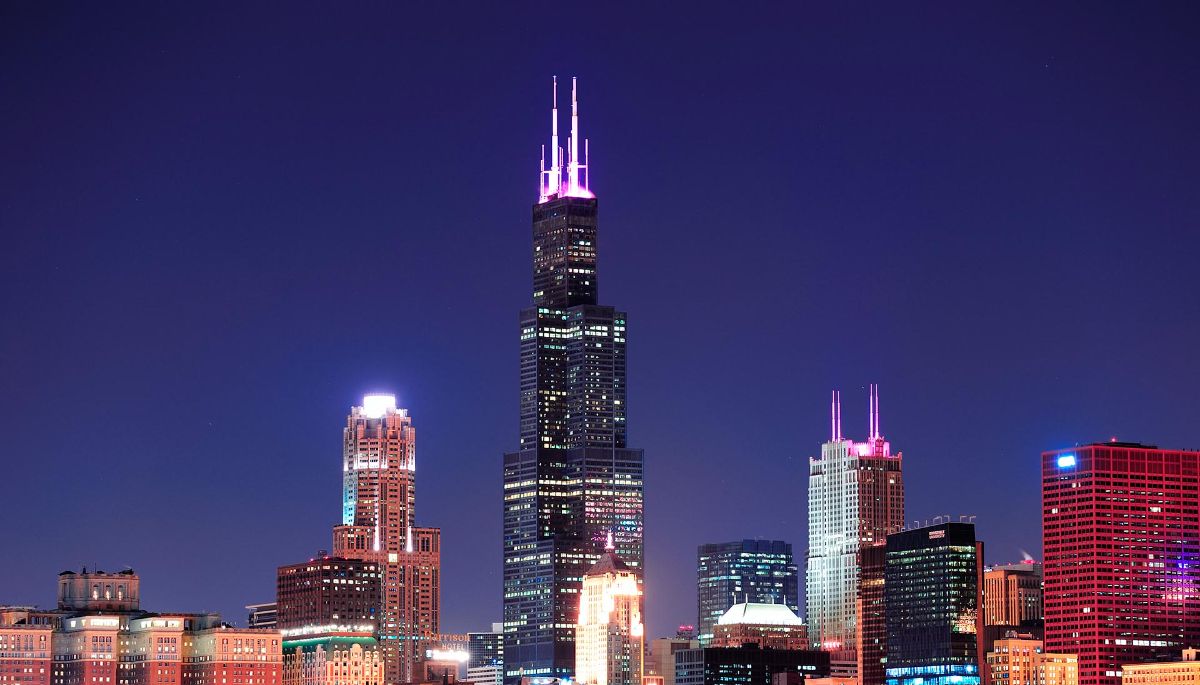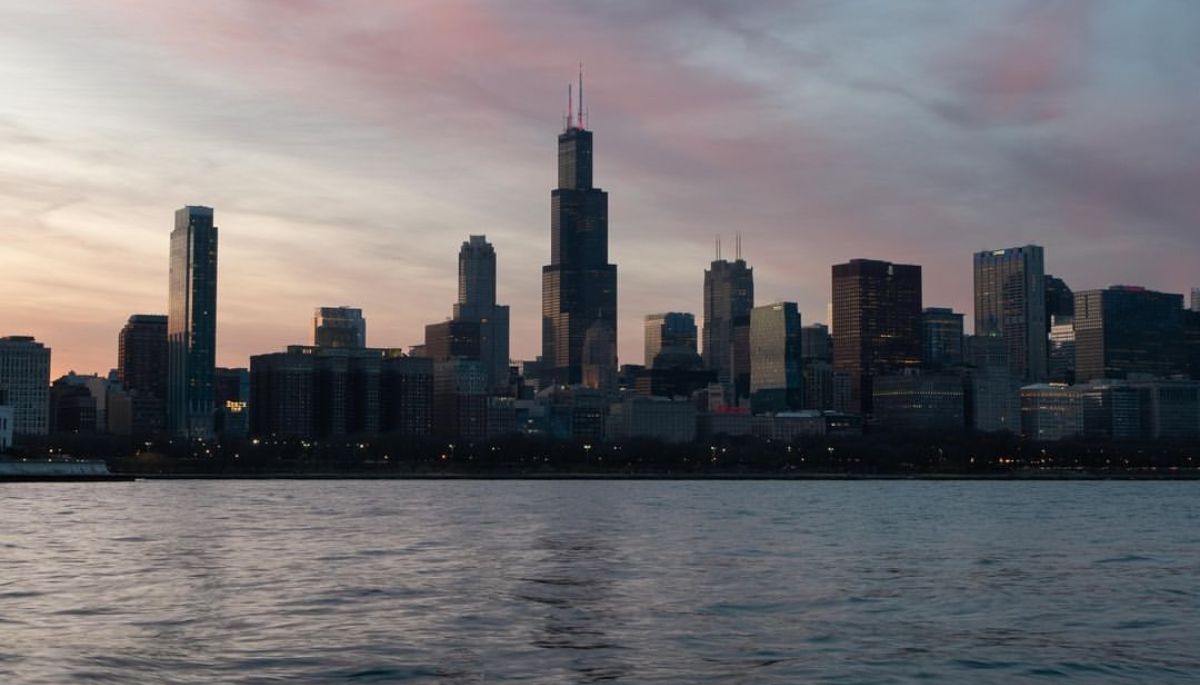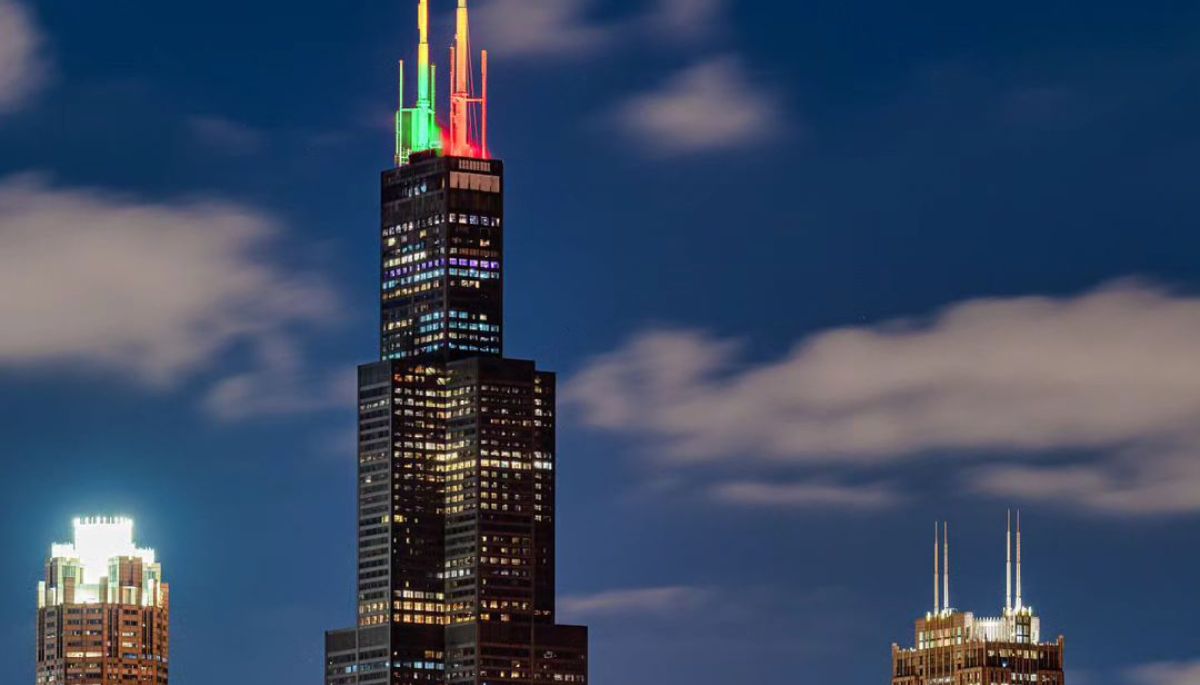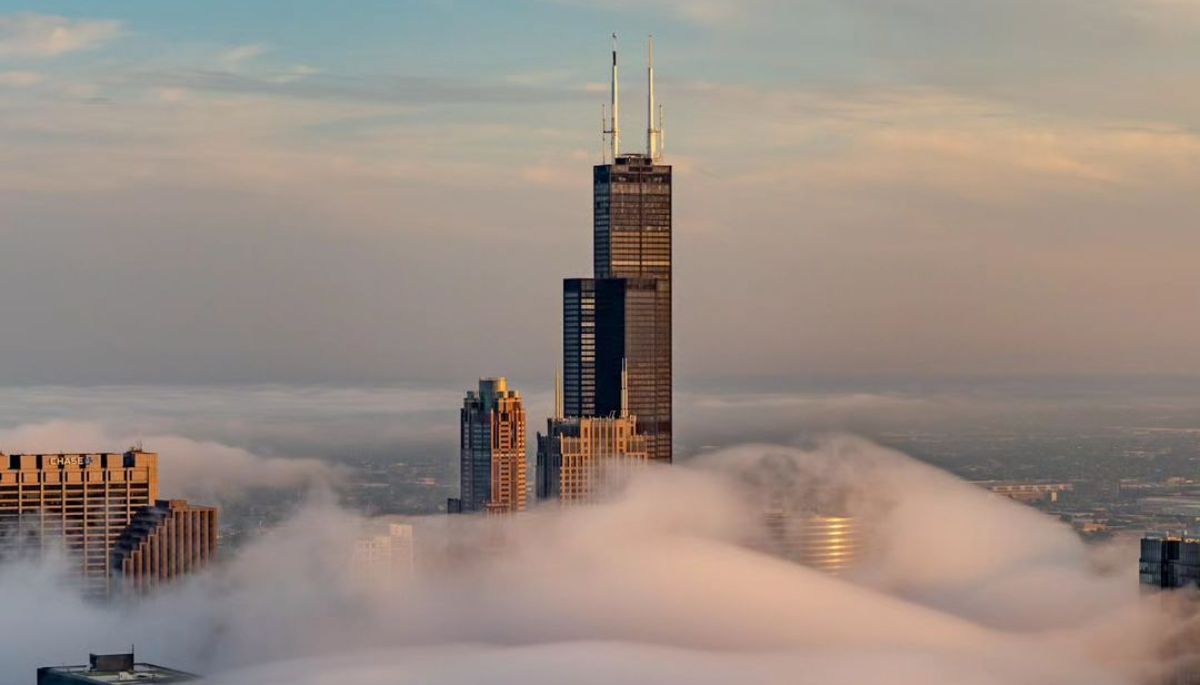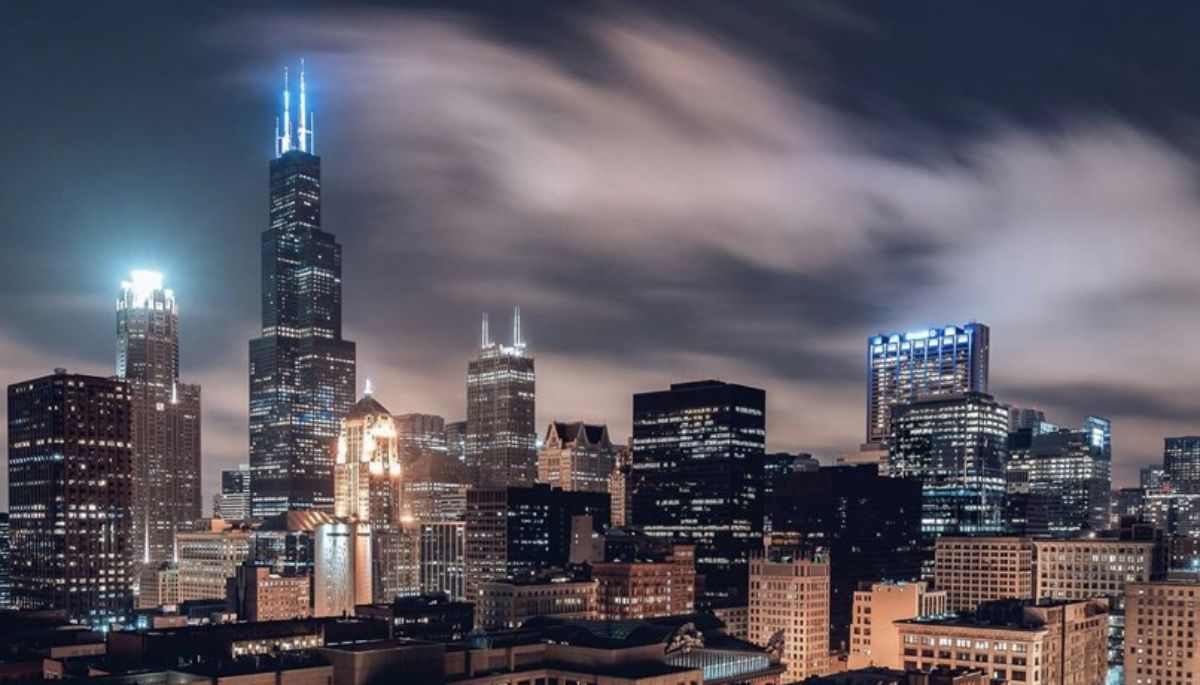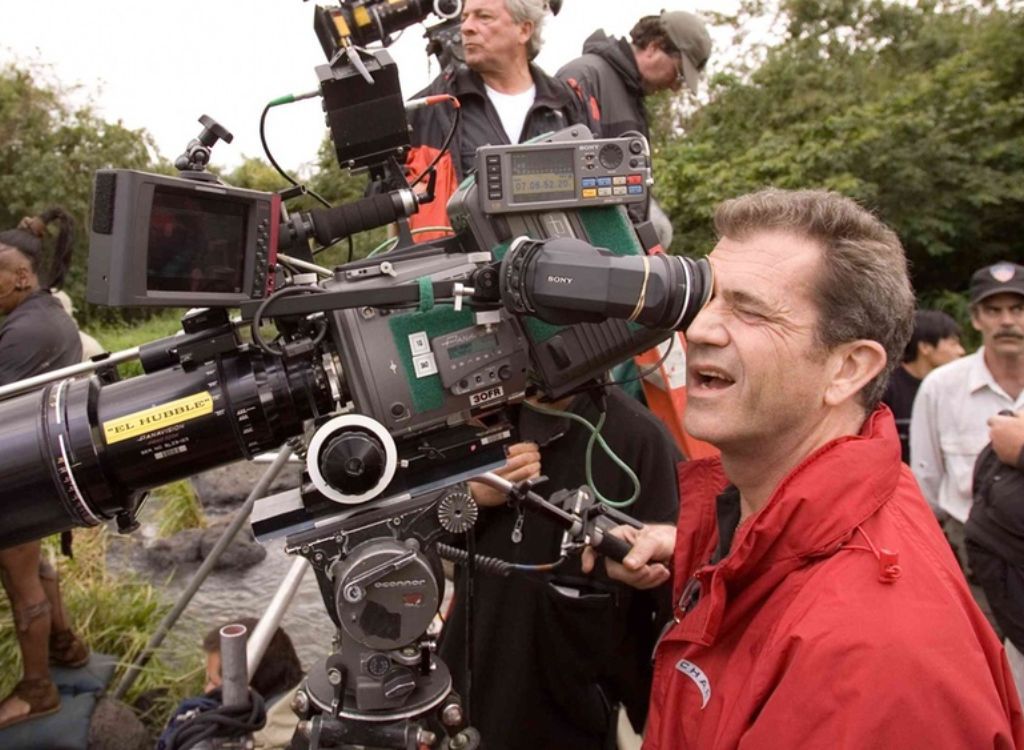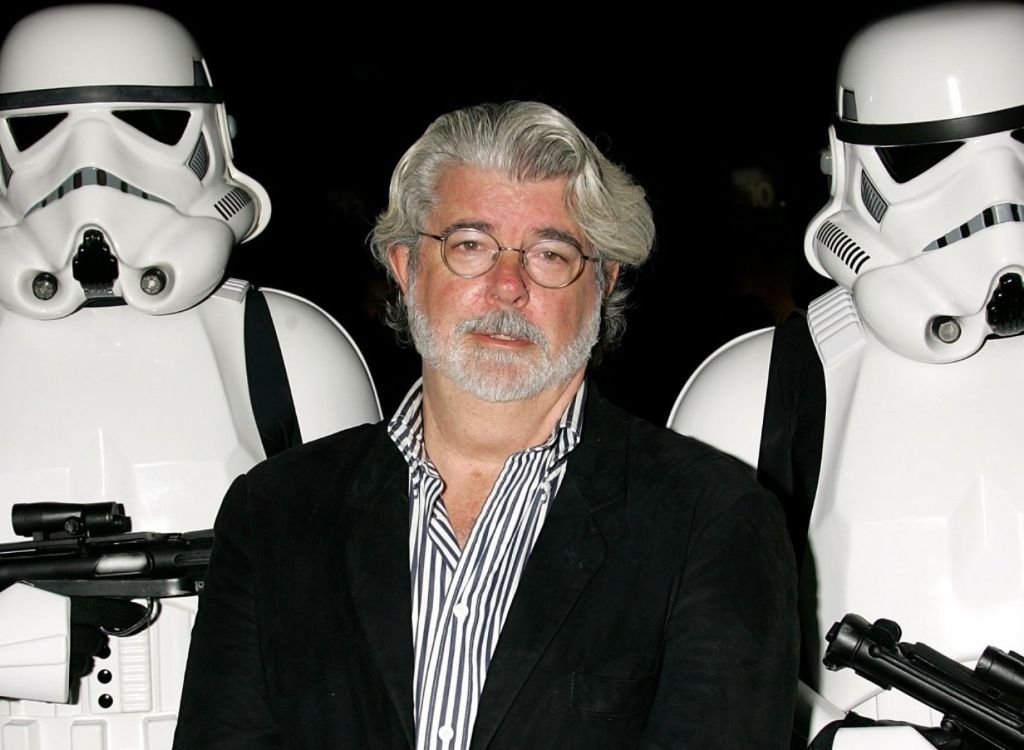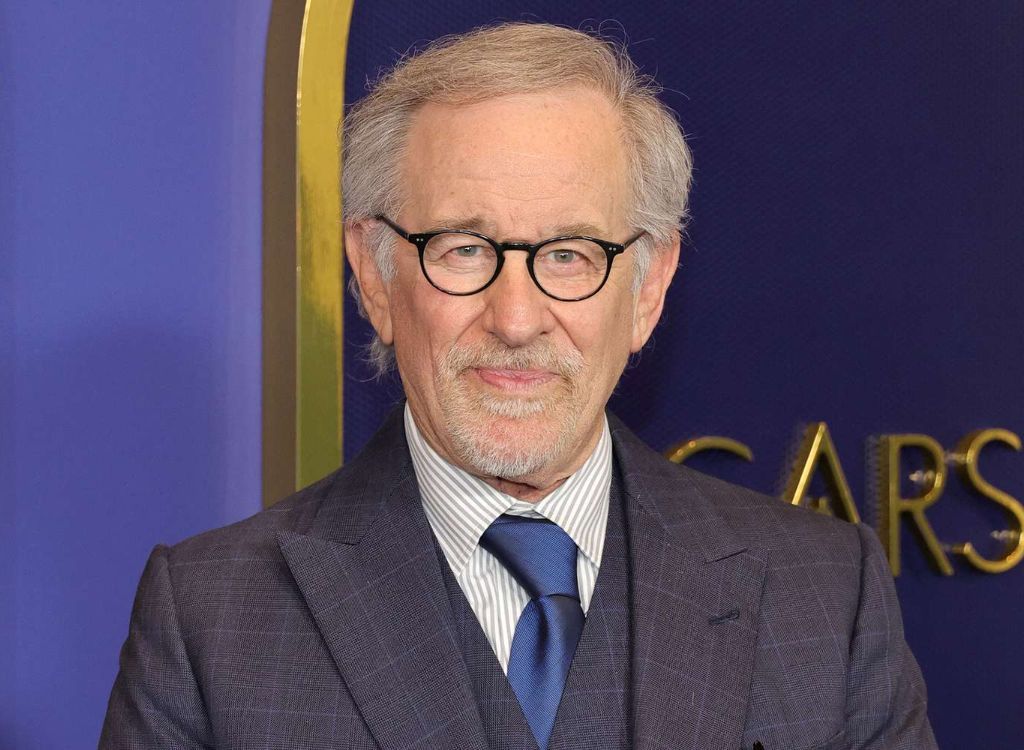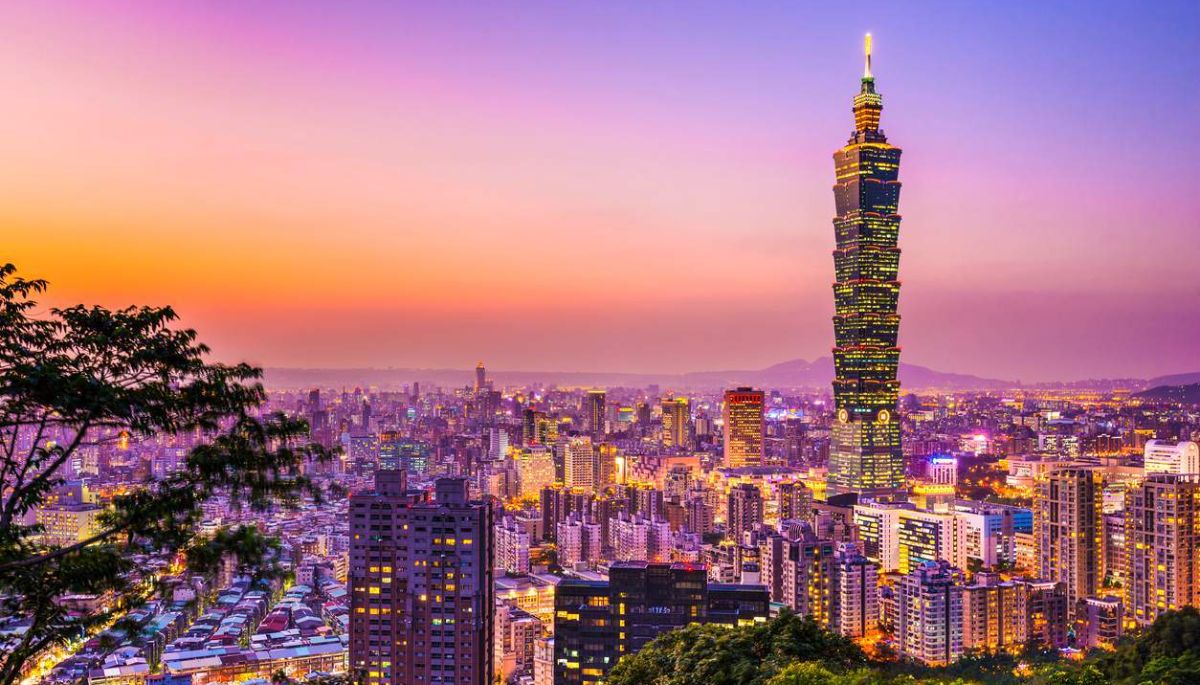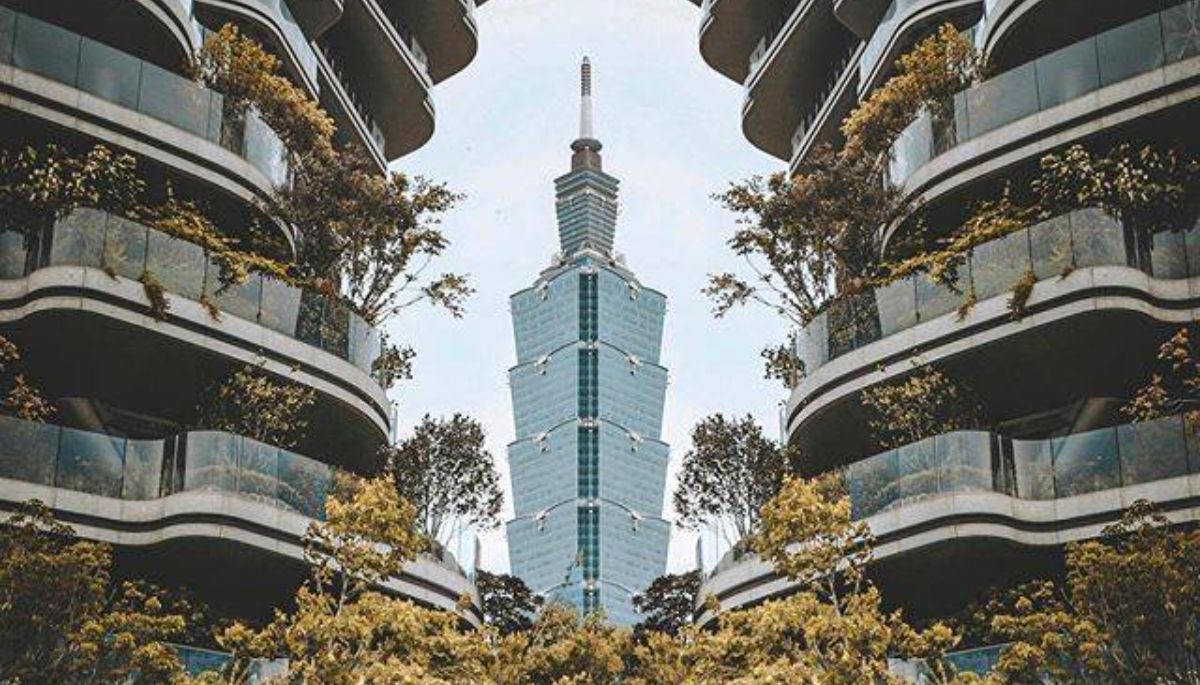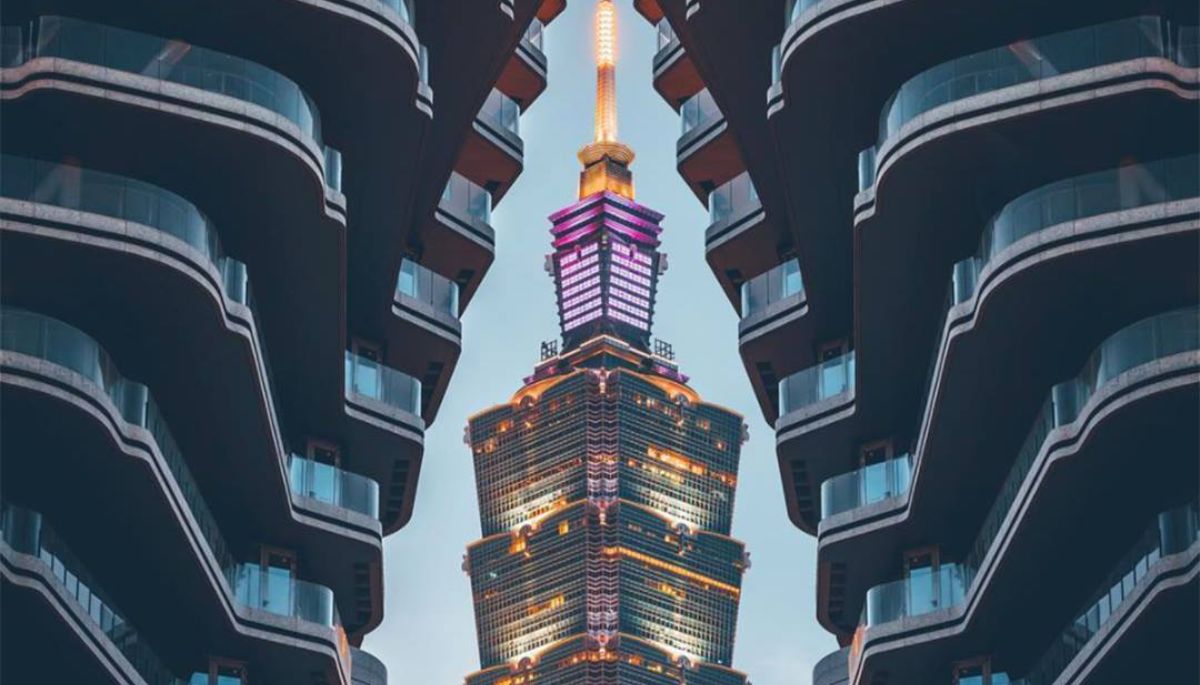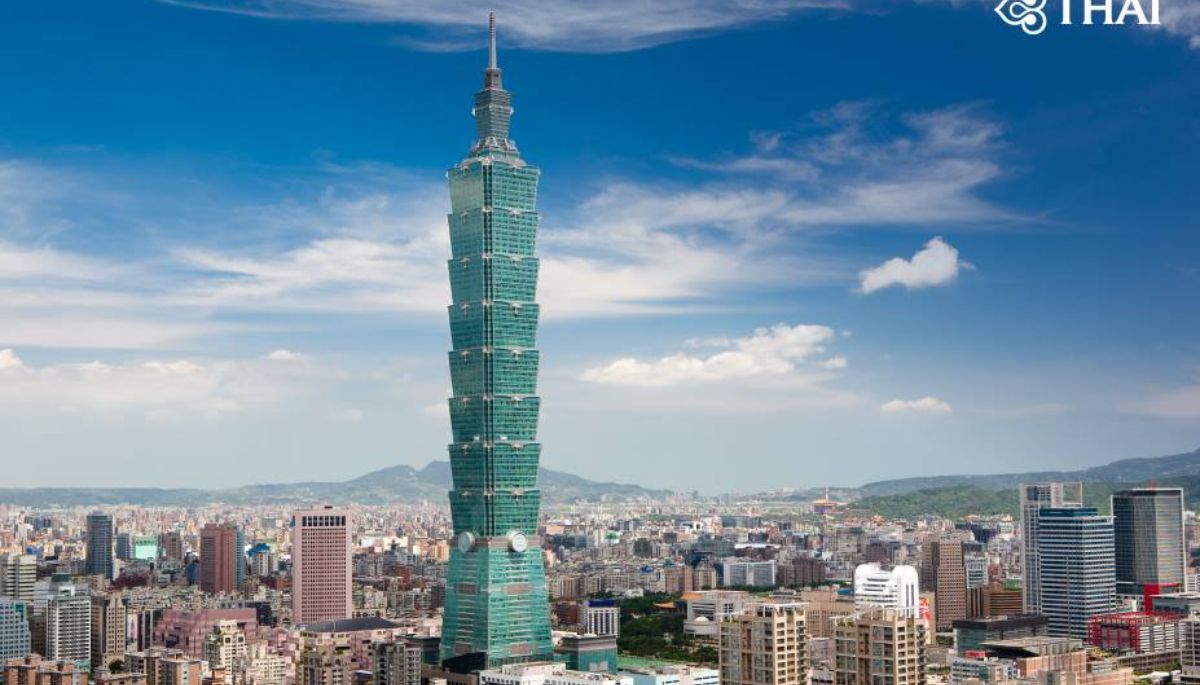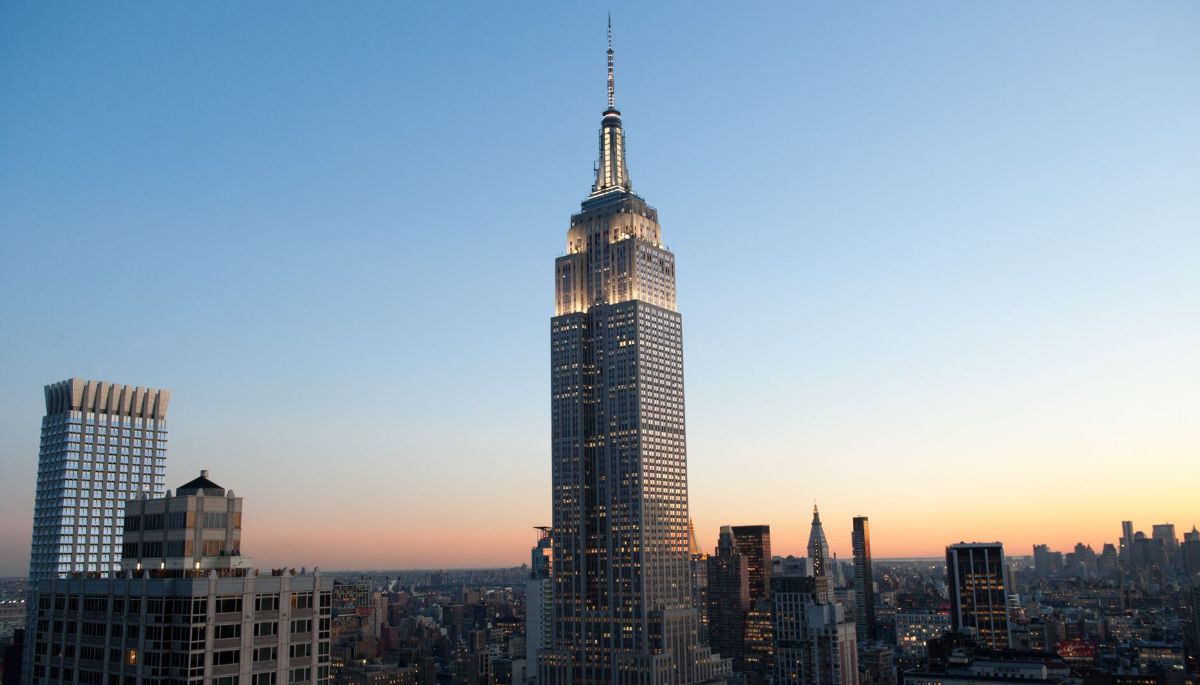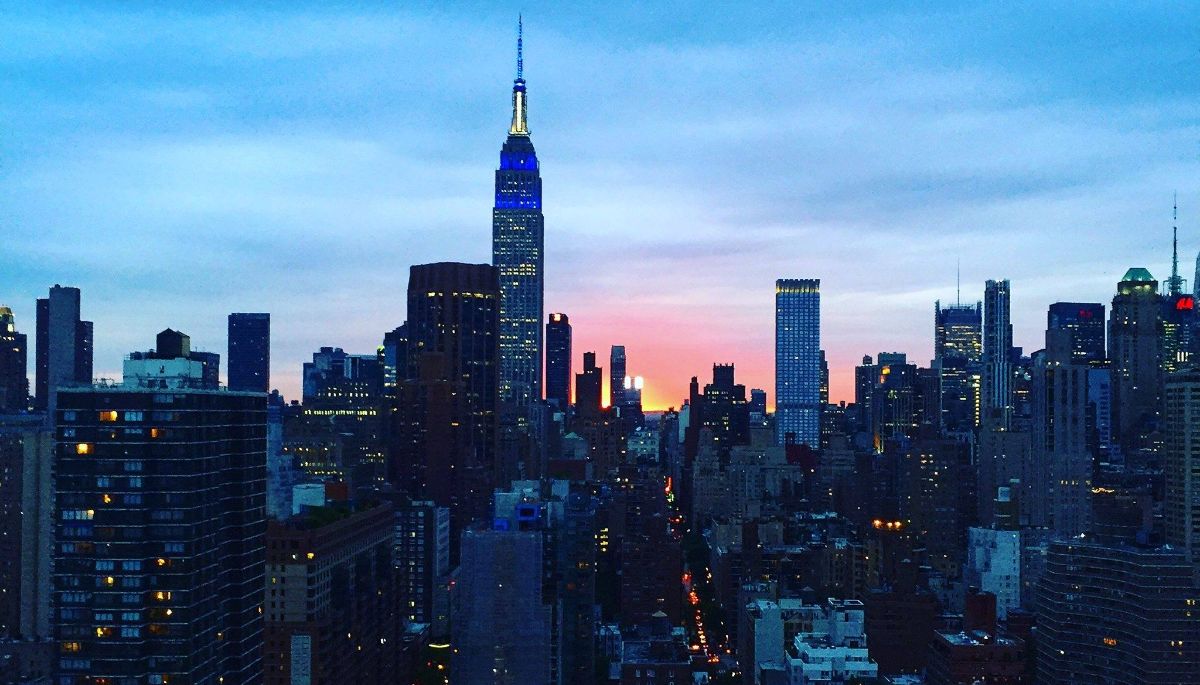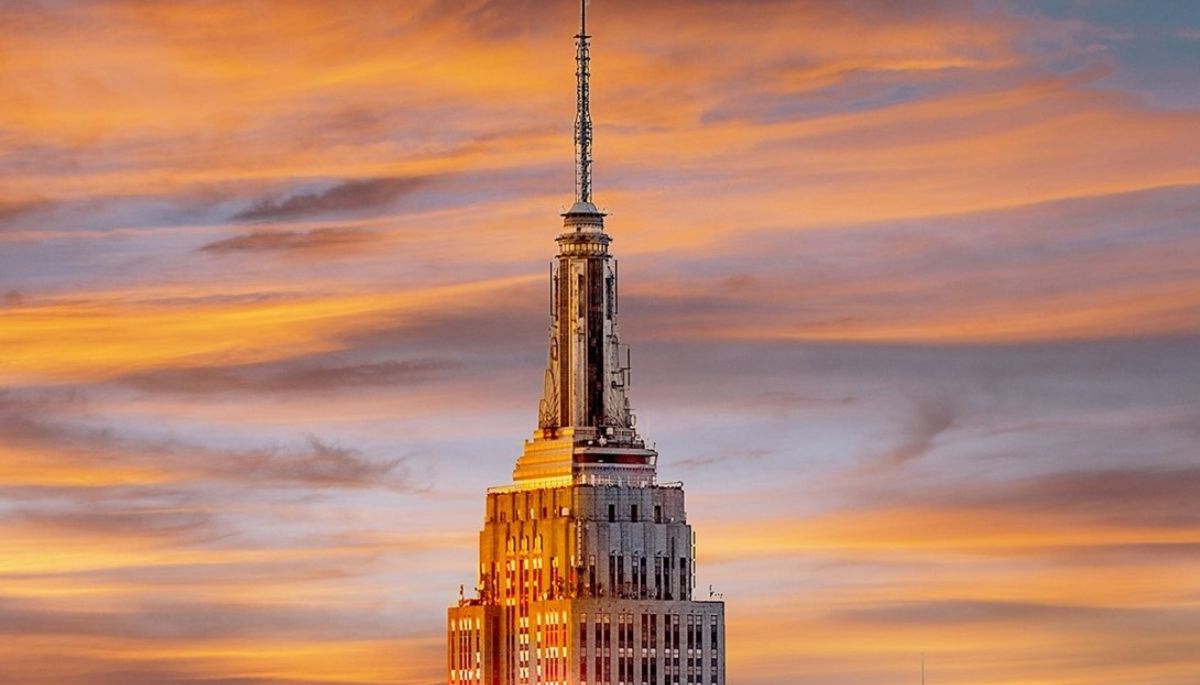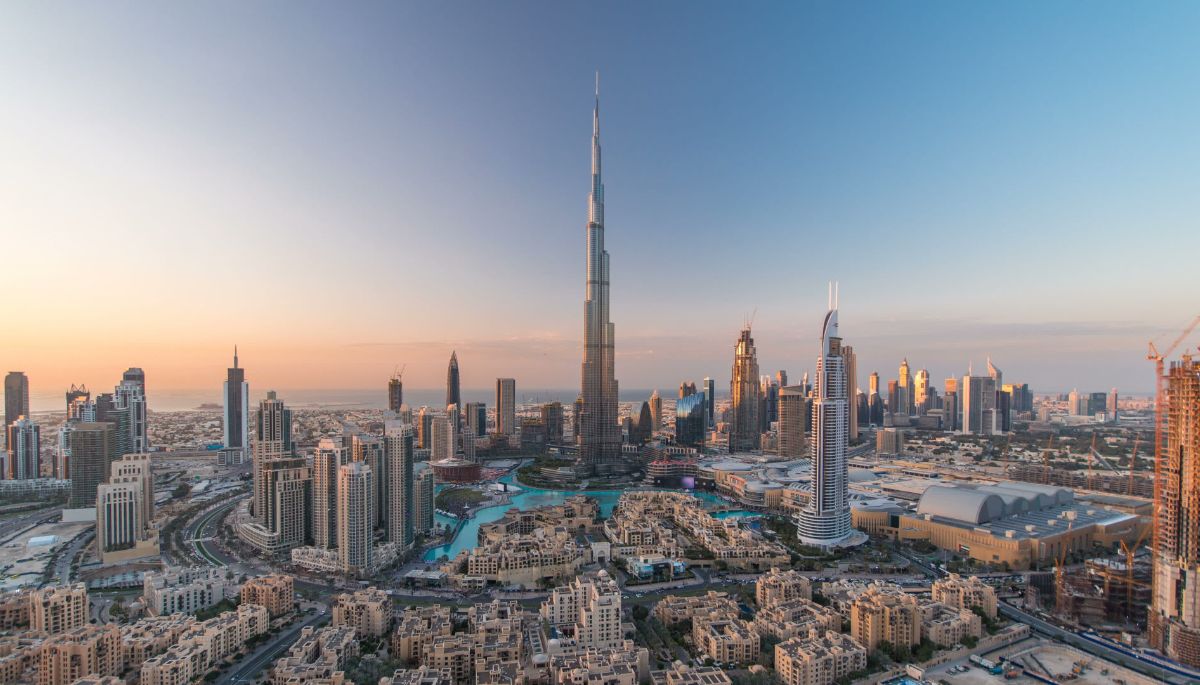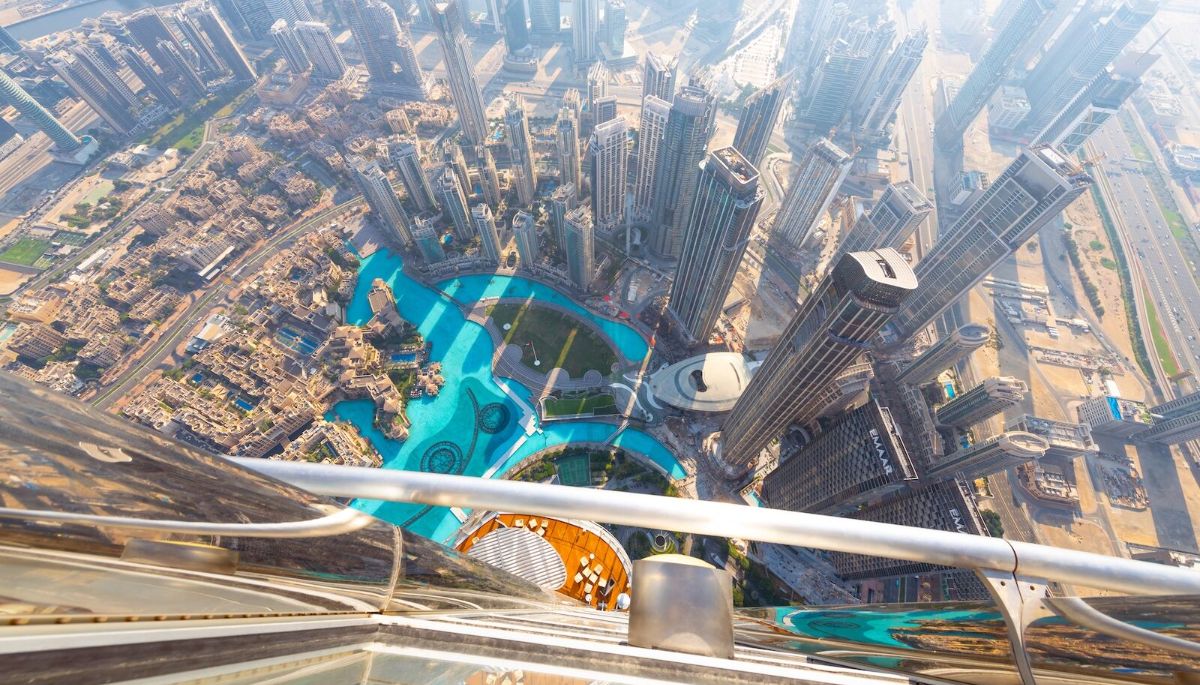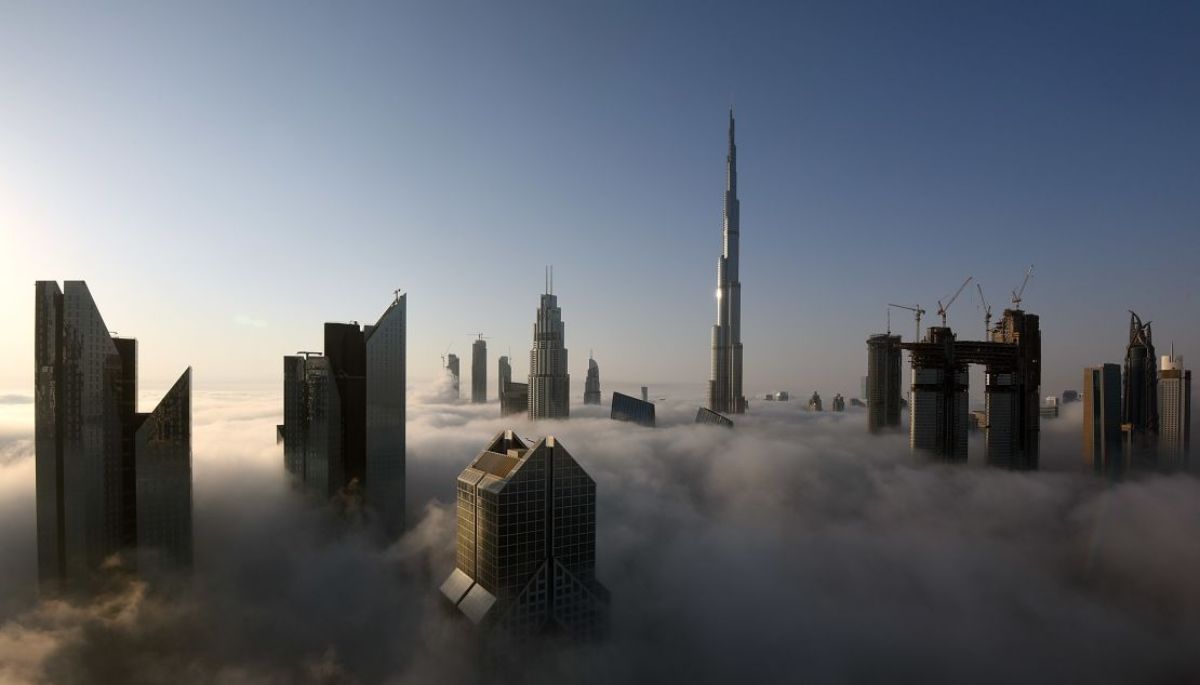Earlier, many countries built tall buildings to show their powers and identities. It had become a sky race between countries, establishing the need to build taller buildings, or skyscrapers, buildings taller than 330 feet.
American architectural critic and writer James McNeill argued, “The skyscraper and the twentieth century are synonymous; the tall building is the landmark of our age.”
Further, with public amazement towards the taller buildings that started in the early 19th century, countries continued building skyscrapers, and now there are around 22,791 skyscrapers worldwide.
Here are the world’s 10 most iconic skyscrapers ever built:
Disclaimer: The provided list is purely based on the author’s perspective and does not foster manipulation of anyone’s point of view.
| Skyscrapers | Location |
| Gherkin | London, UK |
| Transamerica Pyramid | California, USA |
| Petronas Towers | Kuala Lumpur, Malaysia |
| Willis Tower | Illinois, United States |
| China Zun | Beijing, China |
| Abraj Al-Bait Clock Tower | Mecca, Saudi Arabia |
| Taipei 101 | Taipei, Taiwan |
| Empire State Building | New York, USA |
| Shanghai Tower | Shanghai, China |
| Burj Khalifa | Dubai, UAE |
10. Gherkin
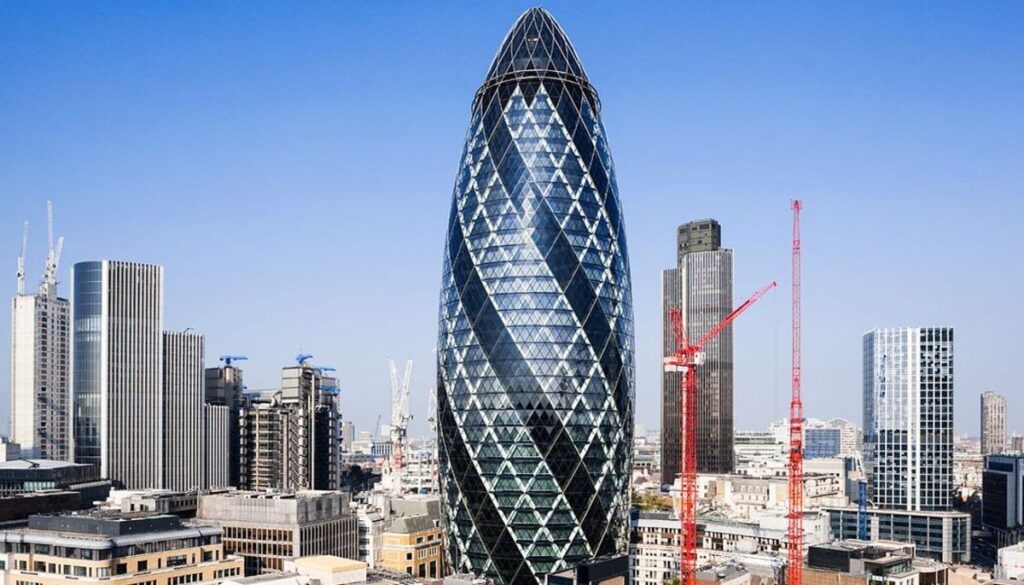
- 30 St Mary Axe, London, EC3
- Sir Norman Foster and Foster+Partners
- 2001-2003
The Gherkin, also known as 30 St Mary Axe, was built in December 2003 in London’s central financial district. The 591 feet tall building with 40 floors symbolizes the beginning of a high-rise construction boom in London.
The best feature of the building is that it uses energy-saving methods, allowing many offices to run smoothly with less energy. Today, the Gherkin has become primarily an office building, as it is the headquarters of many large companies, such as Swiss Re and Sky News.
Furthermore, the Gherkin was designed by two great British architects, Ken Shuttleworth and Norman Foster, and its construction began in early 2001 and was finally completed in December 2003.
9. Transamerica Pyramid
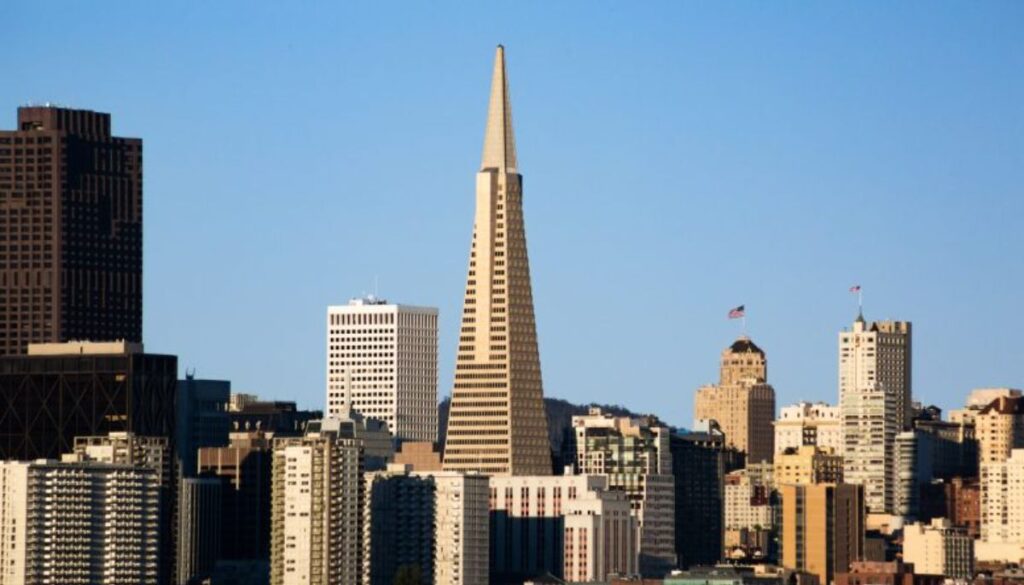
- 600 Montgomery Street, San Francisco, California
- William L. Pereira & Harry D. Som
- 1969-1972
The Transamerica Pyramid is one of the most iconic skyscrapers and the second tallest building in the San Francisco skyline.
Located at 600 Montgomery Street between Clay and Washington in the Financial District, it was the tallest building in San Francisco from its completion in 1972 until the Salesforce Tower was completed in 2018.
Designed by architect William Pereira, it was sometimes referred to by detractors as “Pereira’s Prick.”
The building has a unique pyramid shape with four sloping sides with two wings to accommodate an elevator shaft on the east and a stairwell and a smoke tower on the west.
It is 853 feet (260 meters) tall, has 48 floors, and has an additional 212 feet(64.6 meters) at the spire at the top, making it one of the most recognizable buildings in the world.
Talking about its construction, the pyramid frame is constructed of reinforced concrete, while the exterior is covered in white quartz and aluminum panels with 3678 windows.
Moreover, The building’s tapering design contributes to its stability against wind and seismic forces.
Its steel frame structure with X-bracing ensures its resilience during earthquakes, and the building’s spire extends its height and houses a red aircraft warning beacon, making it a recognizable part of the city’s skyline.
Furthermore, the building incorporates various sustainable features, including energy-efficient lighting and water-saving fixtures. It has received LEED Gold certification for its green building practices.
During the Christmas holiday season, Independence Day, and the anniversary of 9/11, a brightly twinkling beacon called the “Crown Jewel” is lit at the top of the pyramid.
Although the original observation deck on the 27th floor is no longer open to the public, the virtual observation deck on the ground floor offers panoramic city views via live feeds from cameras installed at the top.
8. Petronas Towers
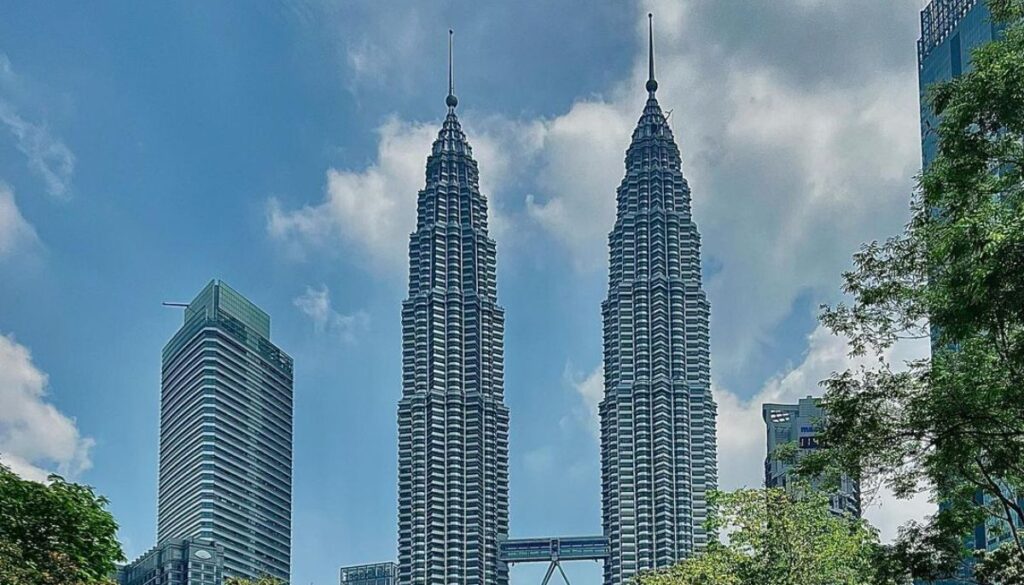
- Jalan Ampang, Kuala Lumpur, Malaysia
- Cesar Pelli
- 1993-1996
The Petronas Towers, also known as the Petronas Twin Towers and colloquially the KLCC Twin Towers, are an iconic pair of 88-story supertall skyscrapers.
Standing at 1483 feet (451.9 meters), it was officially established as the tallest building in the world from 1998 until the completion of Taipei 101 in 2004 and remained the tallest building in Malaysia until the completion of The Exchange 106 in 2019.
Still, The Petronas Tower is the world’s tallest twin skyscraper, symbolizing Malaysia’s rapid modernization and economic growth.
Designed by Argentine-American architect Cesar Pelli, the Petronas Towers are inspired by the art and architecture of the Islamic culture and heritage.
The floors include two intersecting squares, forming an eight-pointed star based on Islamic principles and symbolizing unity and harmony.
Moreover, the towers employ a tube-in-tube system invented by the Bangladeshi-American architect Fazlur Rahman Khan.
Rather than using common steel, the towers are built with extensive reinforced concrete, which provides additional stability against wind forces and seismic activities.
Additionally, the exteriors are covered in glass and stainless steel, giving them a modern and smart look. The building’s facade is designed to reflect light, enriching its visibility against Kuala Lumpur’s skyline.
One of the towers’ noteworthy features is the sky bridge connecting the 41st and 42nd floors of the two towers.
This bridge is 58.4 meters long and 170 meters above the ground, serving as an attractive platform for tourists and a safety means, allowing movement in an emergency.
Furthermore, The towers are supplied with 38 double-decker elevators, making transport of people easy on different floors.
The towers are decorated with vibrant lighting, enhancing their visual appeal, especially at night.
Visitors can access the observation deck on the 86th floor, which offers panoramic views of Kuala Lumpur.
7. Willis Tower
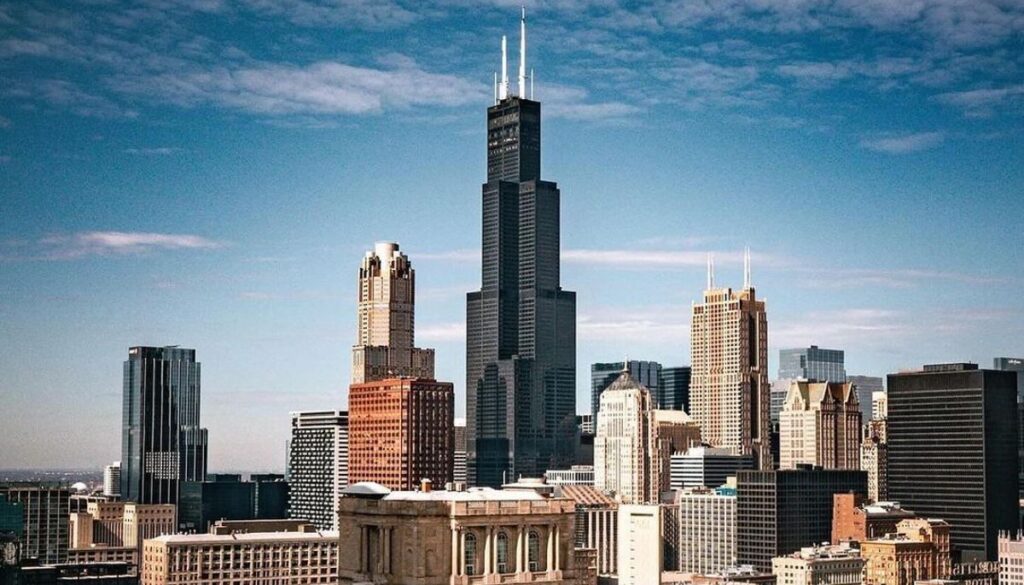
- 233 S. Wacker Drive Chicago, Illinois 60606 United States
- Skidmore, Owings & Merrill, Fazlur Rahman Khan, Bruce Graham
- 1970-1974
The Willis Tower, originally and commonly known as the Sears Tower, is a 110-story skyscraper in the Loop community area of Chicago, Illinois.
It was regarded as the world’s tallest building for about 25 years, from 1973 to 1998.
At 1,451 feet (442.3m) tall, it is the world’s third-tallest building in the Western Hemisphere and the 23rd-tallest.
The tower was known as the Sears Tower from its establishment until its 2009 lease with the Willis Group.
Regarding its structural design, Fazlur Khan developed the tower’s structural system, which consists of a bundled tube design that resists lateral forces from wind and earthquakes.
Moreover, the facade is made of black aluminum and tinted glass, and the upper stories are rented out for offices and observation decks.
The iconic Skydeck observation deck on the 103rd floor offers panoramic views of Chicago and Lake Michigan. It features glass boxes known as “The Ledge.”
It is one of the popular tourist destinations, which attracts over 1.5 million visitors annually to its observation decks and hosting various events and exhibitions.
The tower is publicly open 365 days a year, and the visiting hours are from 9:00 a.m. to 10:00 p.m.
6. China Zun
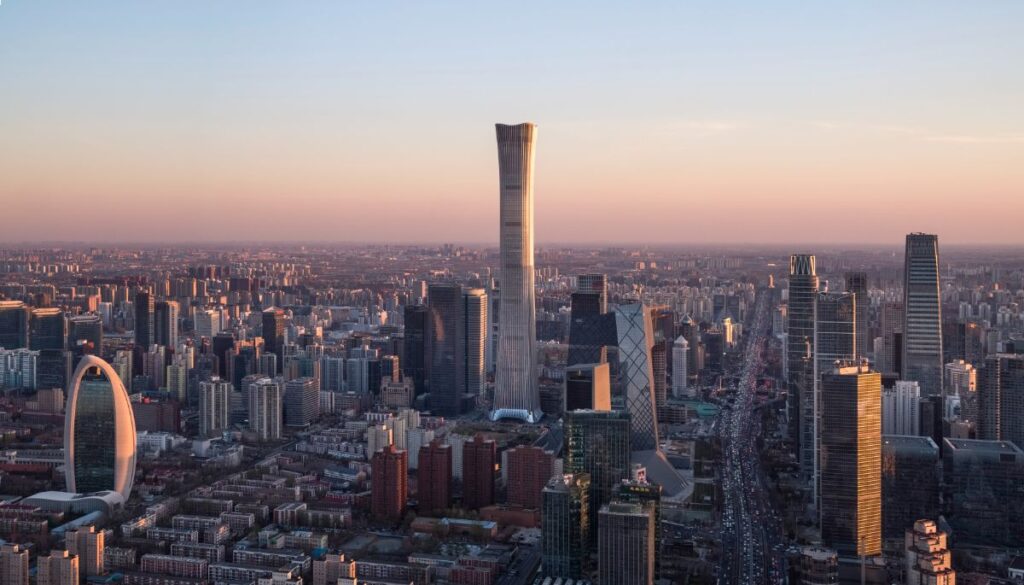
- Z15 plot, Guanghua Road, Beijing CBD, Chaoyang District, China
- TFP Farrells (Land Bid Concept), KPF (Concept & Design), BIAD (Land Bid Concept & Architect of Record)
- 2012-2018
China Zun, also known as CI TIC Tower, is a supertall skyscraper located in the Central Business District of Beijing, China.
The 109-story building is 1,732 feet 4 inches (528 m) tall, making it the tallest building in Beijing and surpassing the China World Trade Center Tower in 2018.
As of 2024, it is the tallest building with a rooftop helipad worldwide.
Architect Kohn Pedersen designed the building’s structure, which features a distinctive twisting form inspired by a traditional Chinese wine vessel called a “Zun.”
It is a mixed-use building featuring 60 floors of office space, 20 floors of luxury apartments, and 20 floors of a 300-room hotel. The top floor, which is at a height of 524m (1719 ft), has a rooftop garden.
In addition, the skyscraper uses advanced smart building technologies, such as integrated building management systems and energy-efficient design features.
Visitors can explore China Zun from Monday to Friday between 8:30 am to 9:30 pm.
5. Abraj Al-Bait Clock Tower
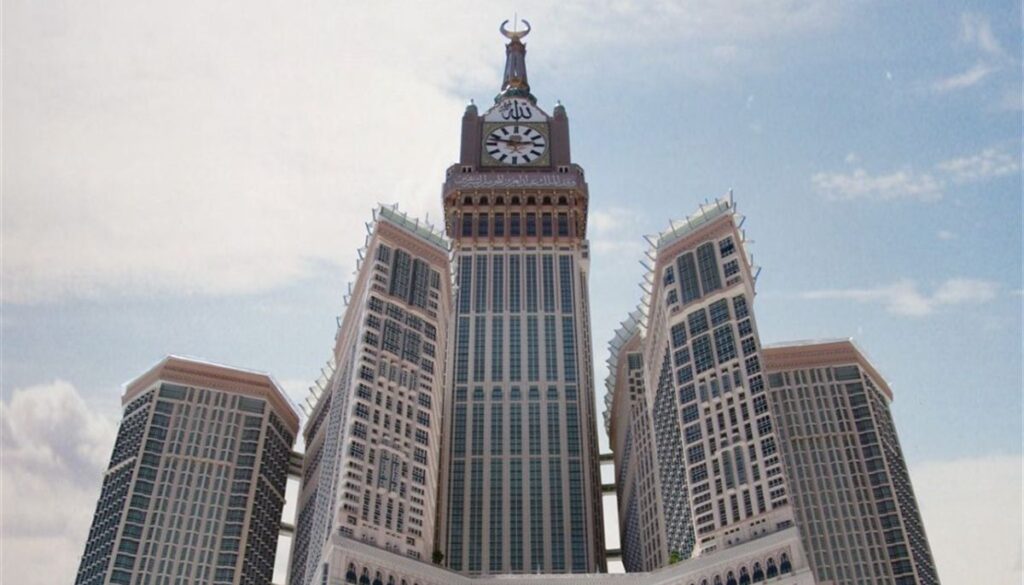
- Mecca, Saudi Arabia
- SL Rasch GmbH and Dar Al-Handasah Architects
- 2002-2011
The Abraj Al-Bait Clock Tower, also known as the Makkah Royal Clock Tower, is located in Mecca, Saudi Arabia, near the Masjid al-Haram, which is the holiest site in Islam.
It is part of the Abraj Al-Bait complex, which includes seven skyscraper hotels.
The tower is 601 m (1,972 ft) tall, making it the world’s third-tallest building and the tallest clock tower.
Regarding design, the tower is inspired by Islamic culture and tradition, referencing the Quran and Mecca’s religious significance.
At the top of the tower is a golden crescent that is 23 meters in height, which adds to its beauty.
Additionally, the tower has four massive clock faces, each measuring 43 meters (141 feet) in diameter, making it the largest in the world.
The clocks are decorated by 2 million LED lights for clear visibility at night.
It also serves as a famous timekeeper for the millions of pilgrims who visit Mecca annually for the Hajj and Umrah pilgrimages.
It is open 24/7 and 365 days for visitors.
4. Taipei 101
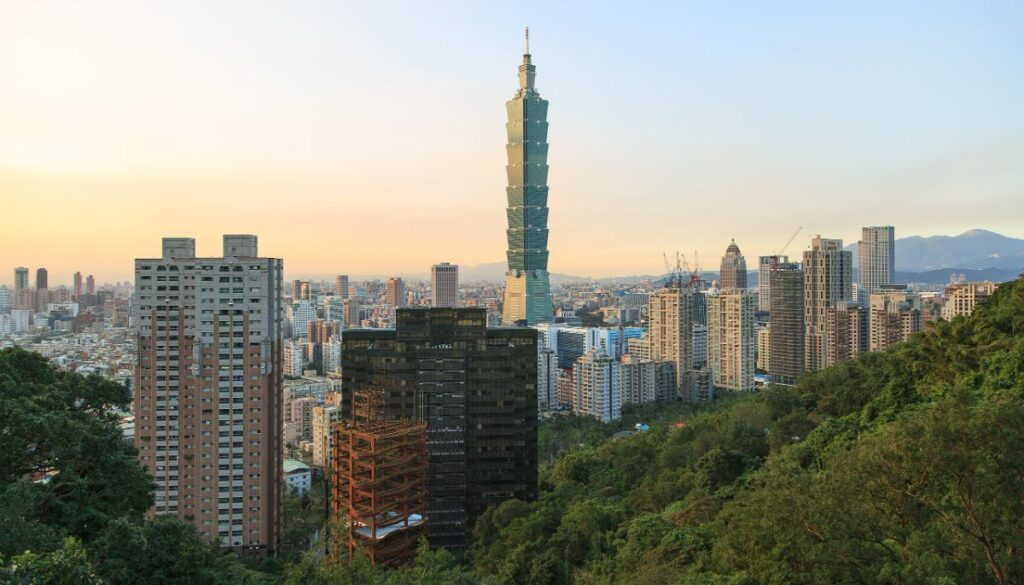
- No. 7, Section 5, Xinyi Road, Taipei, Taiwan
- C.Y. Lee and C.P. Wang
- 1999-2004
Taipei 101, formerly known as the Taipei World Financial Center, is an iconic skyscraper located in the Xinyi District of Taipei, Taiwan. Upon its completion in 2004, it held the world’s tallest building title until the Burj Khalifa surpassed it in 2009.
It stands at a height of 508 meters (1,667 feet), including its spire. The building comprises 101 floors above ground and 5 basement levels.
The design of Taipei 101 is inspired by traditional Asian architecture. Its tiered structure resembles a bamboo stalk, a plant associated with stability and growth in Chinese culture.
Furthermore, its structure includes a frame with a braced core that helps to resist natural forces like earthquakes and strong winds.
The building includes a tuned mass damper (TMD)—a massive 660-ton pendulum suspended between the 87th and 92nd floors.
Moreover, Taipei 101’s exterior is covered in a double-pane glass curtain wall that provides heat and UV protection, minimizing energy consumption. The façade is also designed to resemble traditional Chinese motifs, with sections of the building appearing as stacked pagodas.
In 2011, it became the tallest and largest building in the world to achieve LEED Platinum certification.
The building uses numerous energy-efficient systems, including high-performance lighting, water conservation measures, and a sophisticated Building Management System (BMS) that monitors and controls the building’s various mechanical and electrical systems.
Additionally, Taipei 101 places a mix of offices, retail spaces, and restaurants.
It has indoor and outdoor observatories on the 89th and 91st floors, offering panoramic views of Taipei and the surrounding areas.
The Taipei 101 Observatory is open daily from 9 am to 10 pm for visitors.
3. Empire State Building
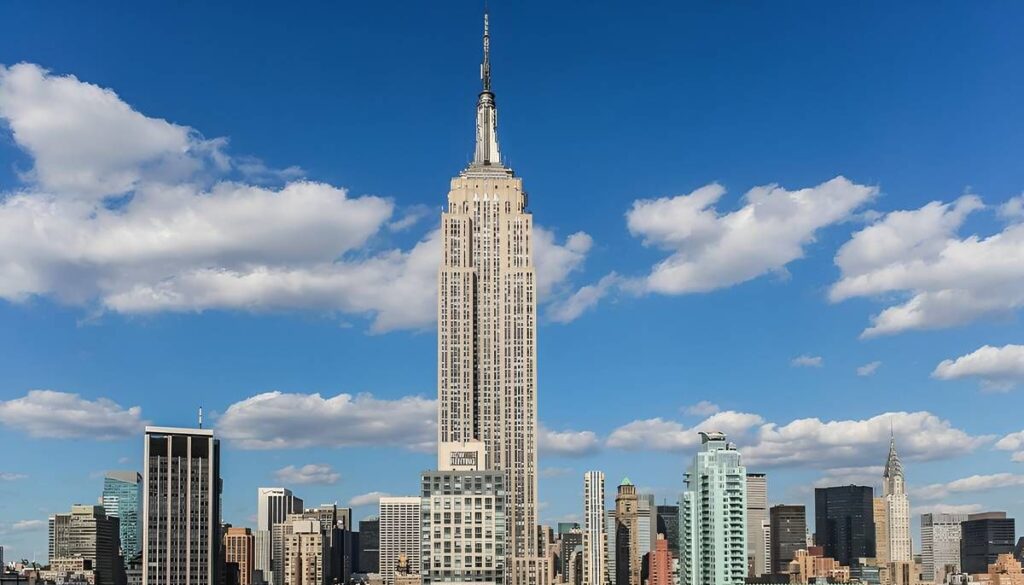
- 350 Fifth Avenue, Manhattan, New York, 10118
- Shreve, Lamb, and Harmon
- 1930-1931
The Empire State Building is a renowned 102-story Art Deco skyscraper located in Midtown Manhattan, New York City.
Its name is derived from “Empire State,” the nickname of the state of New York.
The building’s roof is 1250 feet (380 m) high, and it stands 1,454 feet (443.2 m) tall, including its antenna.
The Empire State Building’s design was inspired by the race to construct the world’s tallest buildings in the 1920s and 1930s.
It was designed in the distinctive Art Deco style, with clean lines and a symmetrical facade.
One of the building’s notable features is its changing light displays, which mark various holidays and events. In 2012, the lighting system was upgraded to a state-of-the-art LED system capable of displaying 16 million colors.
In recent years, the Empire State Building has renovated its energy efficiency, making it a leader in sustainable skyscraper design.
The Empire State Building features observation decks on the 86th and 102nd floors, offering breathtaking city views and making it one of New York’s most popular tourist attractions.
It is open to visitors every day of the year, and ticket prices are $42+ taxes and fees for adults and $36+ taxes and fees for children (6-12 years).
2. Shanghai Tower
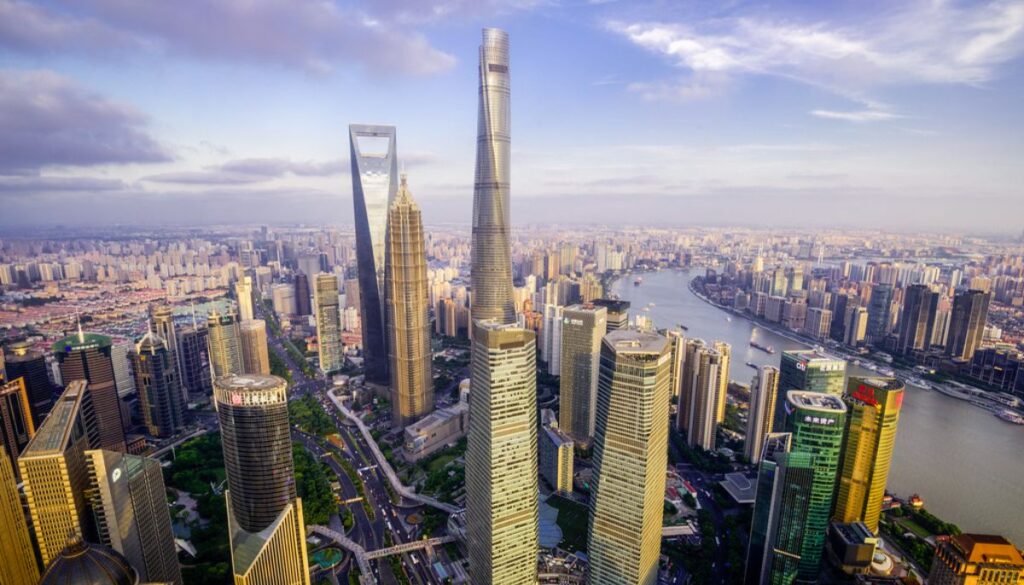
- 501 Yincheng Middle Rd, Lujiazui, Pudong, Shanghai
- Marshall Strabala & Jun Xia (Gensler) TJAD
- 2008-2015
Shanghai Tower is a 128-story mega-tall skyscraper located in the Lujizui area of Shanghai.
With a height of 2,073 ft (632 m), it is the tallest building in China and the second tallest in the world, surpassed only by the Burj Khalifa in Dubai.
Its unique 120-degree twist reduces wind loads on the building and adds to its aesthetic appeal.
Moreover, it has an inner and outer layer of glass, creating a thermal buffer zone that improves energy efficiency by reducing the need for heating and cooling.
Located on the 118th floor at 561 meters (1,841 feet), the observation deck offers stunning views of Shanghai with some of the world’s fastest elevators, capable of reaching speeds of up to 20.5 meters per second (45.9 mph).
Most floors are built for office space, and the tower houses the J Hotel, one of the highest hotels in the world, which occupies floors 84 to 110.
The tower’s lower levels also feature retail spaces, restaurants, and entertainment facilities.
Regarding sustainability, the building includes features such as rainwater collection, a combined cooling and heating power system, and wind turbines near the top to generate power.
The observation deck on the 118th floor of Shanghai Tower is open daily from 8:00 AM to 10:00 PM, and the ticket price ranges from $13 to $29.
1. Burj Khalifa
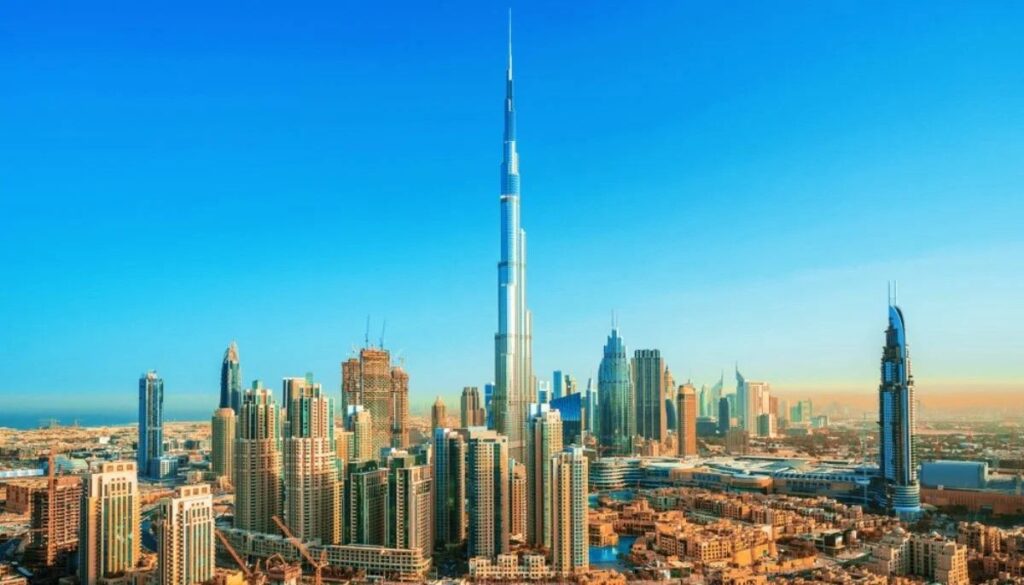
- Sheikh Mohammed bin Rashid Boulevard, Dubai, United Arab Emirates
- Adrian Smith
- 2004-2010
The Burj Khalifa is the most iconic skyscraper located in Dubai, UAE. It is the tallest building in the world, with a height of 828 meters (2,717 feet) with 163 floors.
It was designed by the firm Skidmore, Owings & Merill and cost approximately $1.5 billion to construct.
Its design is inspired by the Hymenocallis flower and Islamic architecture. It has a triple-lobed footprint. The exterior comprises reflective glazing with aluminum, textured stainless steel spandrel panels, and vertical tubular fins.
Furthermore, The building’s structure is made of reinforced concrete and covered in glass, designed to resist the extreme temperatures of Dubai’s climate.
The Burj Khalifa uses a condensate collection system that uses about 15 million gallons of water annually.
Additionally, The Burj Khalifa’s elevators are among the fastest in the world, traveling at speeds of up to 10 meters per second.
Visitors can enjoy panoramic views of Dubai from the observation decks on the 124th, 125th, and 148th floors. The Burj Khalifa offers dining experiences with stunning views, such as at the At.mosphere restaurant.
It is open daily from 8:30 AM to 11:00 PM, and the ticket prices for visiting the observation decks On the 124th and 125th floors are AED 175 for adults and AED 160 for children (4-12 years).
The ticket price at the top of the sky (148th floor) is AED 373 for adults and AED 345 for children.






















